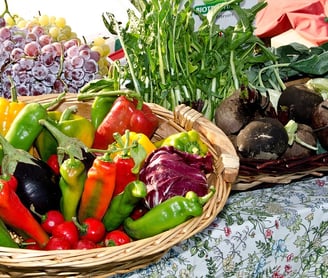Survival Gardening: Growing Your Own Food in Crisis
FOODPREPPING


In times of crisis, whether it's a natural disaster, economic downturn, or global pandemic, the importance of self-sufficiency becomes evident.
The ability to grow your own food through survival gardening can be a valuable skill to acquire. Not only does it provide a reliable source of sustenance during challenging times, but it also fosters a sense of empowerment and resilience. In this blog post, we will explore the benefits and essential tips for survival gardening, enabling you to take charge of your food security when it matters most.
Why Survival Gardening?
During a crisis, traditional food supply chains can become disrupted, leading to shortages and uncertainty. By growing your own food, you become less dependent on external sources, ensuring that you and your family have access to fresh, nutritious produce. Moreover, survival gardening can significantly reduce the financial burden of purchasing groceries, freeing up resources for other essential needs.
Choosing the Right Location
Selecting the right location for your survival garden is crucial. If possible, opt for a sunny spot with well-draining soil. Consider available space in your backyard, a rooftop garden, or even container gardening on a balcony. Additionally, if you're concerned about security, you may want to find a discreet area away from prying eyes.
Understanding Your Climate
Familiarize yourself with your local climate and the best times to plant various crops. Some plants thrive in cool temperatures, while others require warmth and ample sunlight. Knowing your climate helps you select appropriate crops and plan your planting schedule effectively.
Prioritize High-Yield Crops
In a survival garden, space and resources may be limited. Therefore, focus on growing high-yield crops that provide maximum nutrition and are easy to cultivate. Examples of such crops include potatoes, sweet potatoes, tomatoes, beans, kale, and squash. These versatile crops can sustain you throughout various stages of a crisis.
Save Seeds for the Future
As you grow your survival garden, consider saving seeds from your best-performing plants. Seeds are a valuable resource for the future, and by saving them, you ensure a continuous supply of produce in subsequent seasons. Learn how to properly harvest and store seeds for long-term viability.
Implement Sustainable Gardening Practices
In a crisis, access to resources may be limited, so practicing sustainability is vital. Utilize rainwater harvesting to water your plants, compost kitchen scraps to enrich the soil, and employ natural pest control methods to protect your crops without relying on harmful chemicals.
Learn Basic Preservation Techniques
Once your survival garden starts yielding produce, it's essential to learn basic food preservation techniques to extend the shelf life of your harvest. Canning, drying, fermenting, and freezing are effective methods to store surplus fruits and vegetables for consumption during leaner times.
Community Gardening and Bartering
Consider participating in community gardening initiatives. By joining forces with neighbors and fellow community members, you can share resources, knowledge, and support. Additionally, in times of crisis, bartering surplus crops or gardening skills can foster a sense of cooperation and strengthen community bonds.
Conclusion
Survival gardening is not just about preparing for worst-case scenarios; it's about reclaiming control over your food supply and embracing a more sustainable lifestyle. By growing your own food, you become more self-reliant and resilient in the face of adversity. Remember, starting a survival garden requires time, effort, and dedication, but the rewards are immeasurable – not only in nourishing your body but also in nourishing your spirit and sense of autonomy. So, roll up your sleeves, grab a shovel, and embark on the journey of survival gardening to secure a better, more sustainable future for yourself and your community.
